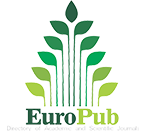Externalities of urban mobility and challenges for sustainable development in Grand Lomé, Togo
Vol 8, Issue 16, 2024
VIEWS - 2018 (Abstract)
Abstract
Urban mobility in Grand Lomé is affected by several negative externalities, including road congestion, insecurity and environmental pollution. Traffic jams cause considerable economic losses, estimated at more than 13,000 CFA francs per month for some public officials, and represent a financial drain of several million CFA francs per day on the Togolese economy. These challenges are accentuated by rapid urbanization and a dizzying increase in the number of vehicles, especially motorcycle taxis. These factors not only cause economic losses, but also to the deterioration of the quality of life of the inhabitants. On average, motorists lose up to 49.5 min per day in traffic jams, with fuel and time costs estimated at hundreds of thousands of CFA francs per year for each user of the main boulevards. Through an in-depth analysis of the impacts of these negative externalities on mobility and sustainable development, this study reveals that traffic congestion, combined with the lack of road infrastructure, generates considerable economic and environmental costs. These traffic jams also worsen air pollution, making the transport sector responsible for 80% of greenhouse gas emissions. These proposed solutions include: 1) The modernization of road infrastructure, culminating in the construction of new lanes entirely dedicated to public and non-motorized transport. 2) The regulation of motorcycle taxis, inspired by regional examples, to improve safety and efficiency. 3) The introduction of rapid transit systems, such as Bus Rapid Transit (BRT), to make travel more fluid. 4) The implementation of strict environmental standards and regular technical controls to reduce greenhouse gas emissions. These proposals aim to reduce social and economic costs, while promoting sustainable mobility and a better quality of life for residents.
Keywords
Full Text:
PDFReferences
- Ajayi, O. (2018). Urban Transport Development in Lagos: Opportunities and Challenges. Journal of African Urban Studies, 5(3), 45-62.
- CCA (2016). Economic Impact of Time Loss in Traffic Congestion. Centre for African Cities Analysis, Abidjan.
- Dao-N’dja, M. (2022). L’émergence des taxis-tricycles dans la mobilité urbaine à Lomé. Revue des Sciences Sociales et de la Mobilité Urbaine, 14(2), 101-118. Rabat: IMIST.
- Edoh, K. (2014). The environmental impact of used vehicles in Lomé. Ph.D. thesis, University of Lomé, Lomé.
- Faye, D. (2020). The Economic Cost of Traffic Congestion in Dakar. Dakar Economic Studies, 7(4), 13-27.
- Gnakouri, D. (2019). Regulating Informal Transport in Cotonou: A Case of Zémidjans. Benin Urban Mobility Review, 8(1), 21-38.
- Guézéré, A. (2008). Impact of motorcycle taxis on urban mobility in Togo. Éditions du Sahara, Lomé.
- Guézéré, A. (2011). Les taxis-motos à Lomé: Genèse et logiques d’un mode de transport urbain. Lomé: Éditions du Sahara.
- Hassane, M. H., & Manzama, D.-N. (2022). L’émergence des taxis-tricycles dans la mobilité urbaine de Lomé. Revue IMIST des Dynamiques Urbaines Africaines, 15(4), 87-104. Rabat: IMIST.
- Kasumba, J. (2016). Integrating Boda-bodas into Kampala’s Formal Transport System. Kampala Transport Journal, 3(4), 56-70.
- Klopp, J. M. & Cavoli, C. (2019). Bus Rapid Transit and Mobility in African Cities. African Transport Journal, 10(2), 67-79.
- Kokou, K. (2010). Urbanisation et gestion des déchets solides à Lomé. Thèse de doctorat, Université de Lomé, Lomé, Togo.
- Kokou, K. (2012). Territoires des taxis-motos à Lomé: De la pratique quotidienne à la structuration de l’espace urbain. Géographie, Économie et Société, 14(1), 53-70. Paris: Éditions Économie et Développement.
- Le Figaro (2008). "Traffic Jams in African Metropolises: A Challenge for the Twenty-First Century." Le Figaro, edition of 2 April 2008.
- Mbatha, S. (2018). ICT Usage to Improve Efficiency in the City of Johannesburg Public Transportation System. REAL CORP Conference Proceedings, Vienna.
- Ministry of Security and Civil Protection. (2020). Annual report on road accidents in Togo. Lomé: Government of Togo.
- Mwangi, P. (2017). Bus Rapid Transit Solutions in East Africa: A Case Study of Nairobi. Nairobi Journal of Urban Planning, 14(2), 101-118.
- OECD (2016). The Role of Transport in Environmental Policy. Paris: Organization for Economic Co-operation and Development.
- Quénot-Suarez, H. (2012). Urban mobility and traffic congestion in Accra. Editions Économie et Développement, Paris.
- Science Publishing Group (2024). Approach to user safety of soft modes of transport in Greater Lomé. Journal of Sustainable Urban Development, 12(3), 45-60.
- Smith, G., & Chido, L. (2015). Urban Environmental Impact and Sustainable Solutions in African Cities. Johannesburg: EcoUrban Publishers.
- SSATP. (2023). Summary Report on Urban Mobility in African Cities: Developing National Urban Mobility Policy and Delivering at the City Level. SSATP, World Bank.
- SYSTRA. (2023). SYSTRA supports Lomé in its sustainable urban mobility plan. Company Report, Paris, France: SYSTRA.
- UN-Habitat. (2013). Planning and design for sustainable urban mobility: Global report on human settlements. Nairobi, Kenya: UN-Habitat.
- World Bank & AfDB. (2022). Powering Mobility: The Rise of Digital Transportation in Africa. African Development Bank.
- World Bank(2021). Policies for Sustainable Accessibility and Mobility in Urban Areas of Africa. World Bank, Washington D.C.
- World Health Organization (WHO). (2013). Global Status Report on Road Safety 2013: Supporting a Decade of Action. Geneva: WHO Press. ISBN: 9789241564564.
DOI: https://doi.org/10.24294/jipd10060
Refbacks
- There are currently no refbacks.
Copyright (c) 2024 Abelim Passoli, Coffi Aholou, Kossi Dizewe
License URL: https://creativecommons.org/licenses/by/4.0/

This site is licensed under a Creative Commons Attribution 4.0 International License.







